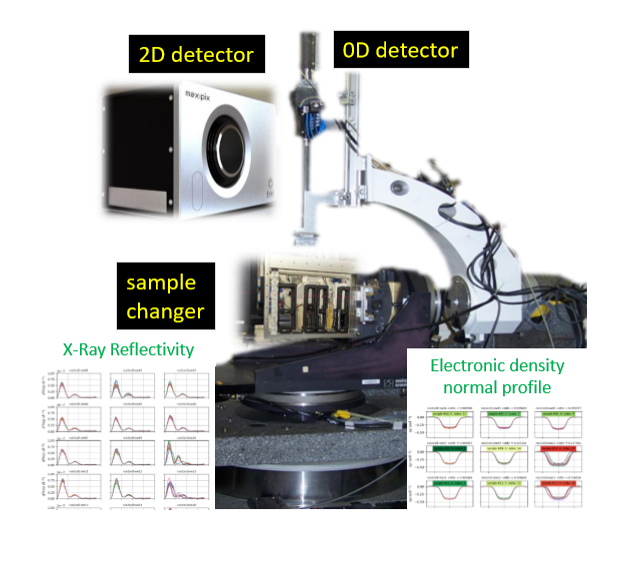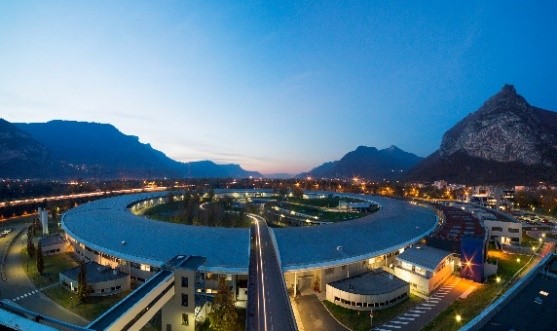Multi-technique goniometer – Reflectivity at ESRF
Description
Among the X-ray instruments and techniques used on the CRG-IF BM32 line, the GMT goniometer uses reflectivity measurements to determine the average electron density profile along the surface normal of a specimen or an interface within it. A model (thickness, roughness) of one or more layers separated by interfaces can be fitted to the experimental profile.
Large numbers of samples (20-200 depending on size) can be mounted on a loader-passenger system. Multi-layer cassettes, which can even be prepared in advance in the laboratory, can be reproducibly repositioned in the X-ray beam, speeding up the alignment phase and enabling automatic, unsupervised acquisitions.
Solid/air, solid/solid and solid/liquid interfaces (small, sealed, stackable cells) can be characterized for studies on model or applied systems, with in situ or operando measurements. Measurements are optimized at an energy of 27 keV to probe buried interfaces or surfaces immersed in solution.
Location
ESRF, Beamline BM32 CRG-IF
Contacts
Platform manager: Samuel TARDIF
Associated targeted project coordinators: Etienne BUSTARRET, Nathalie BOUDET
Technical characteristics
- Source: Curvature magnet
- Beam characteristics on sample: 700×50 µm2 (FWHM HxV), flux of the order of 2.1011 photons/s at 27 keV.
- Reflectivity spectrum acquisition time: 2-20 minutes
- Detector: 2D hybrid CdTe, Si pixel detectors; point detector (scintillator)étecteur
- Automated data processing using Notebooks and Python scripts

X-ray reflectivity is used to determine the electron density profile normal to the surface. Collection is optimized at 27 keV (high hard X-ray penetration) with 2D or 0D detectors and a sample changer that can be pre-loaded in the laboratory..
Associated targeted project
